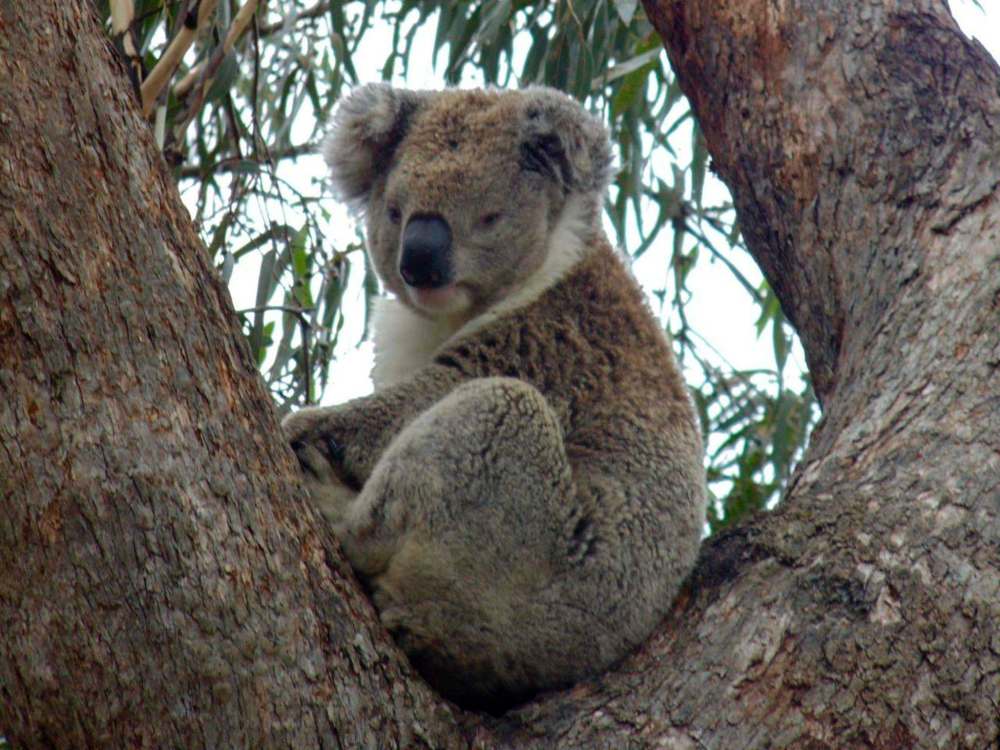Koalas a pawn in debate over climate change
Advertisement
Read this article for free:
or
Already have an account? Log in here »
To continue reading, please subscribe:
Monthly Digital Subscription
$0 for the first 4 weeks*
- Enjoy unlimited reading on winnipegfreepress.com
- Read the E-Edition, our digital replica newspaper
- Access News Break, our award-winning app
- Play interactive puzzles
*No charge for 4 weeks then price increases to the regular rate of $19.00 plus GST every four weeks. Offer available to new and qualified returning subscribers only. Cancel any time.
Monthly Digital Subscription
$4.75/week*
- Enjoy unlimited reading on winnipegfreepress.com
- Read the E-Edition, our digital replica newspaper
- Access News Break, our award-winning app
- Play interactive puzzles
*Billed as $19 plus GST every four weeks. Cancel any time.
To continue reading, please subscribe:
Add Free Press access to your Brandon Sun subscription for only an additional
$1 for the first 4 weeks*
*Your next subscription payment will increase by $1.00 and you will be charged $16.99 plus GST for four weeks. After four weeks, your payment will increase to $23.99 plus GST every four weeks.
Read unlimited articles for free today:
or
Already have an account? Log in here »
Hey there, time traveller!
This article was published 10/12/2019 (2180 days ago), so information in it may no longer be current.
Australia’s east coast is burning. Bushfires have swept across Queensland and New South Wales with devastating effects for both people and wildlife. That includes the iconic koalas; headlines across the globe have declared koalas “functionally extinct,” an extinction resulting from rapid anthropogenic climate change.
The problem is this: the story is false.
Koalas are cute and photogenic. So when koalas were threatened by bushfires, climate activists saw an opportunity to emote for headlines. Hyperbolic and easily refuted rhetoric was the result.

What is true is that koalas have undergone a multi-decade population decline that is deeply worrisome. The International Union for Conservation of Nature (IUCN) lists them as “vulnerable,” three steps above extinct in the wild. And yes, some koalas have been killed in the bushfires. Sadly, Lewis, the koala rescued from the fire by a grandmother near Port Macquarie, later succumbed to his injuries.
And others did too, somewhere between 300 and 1,000 koalas. But even that upper figure is only three-tenths of one per cent of the IUCN estimate of the current global koala population of 300,000.
There are some local koala populations that are in trouble and may actually be “functionally extinct” — that is, they will not survive in the wild without human intervention. But that is far from true for koalas overall. In populations on Kangaroo Island to the west of Adelaide, where about 50,000 koalas live, and in the Adelaide Hills to the north of Adelaide, which have a population of 150,000 koalas, conservation efforts have been so successful that wildlife biologists have had to use contraceptives to curb populations that have become too large.
So koalas are not functionally extinct. And there are two big problems with saying they are and that climate change is to blame.
First, it distracts from the real and urgent problems facing koala conservation — most importantly, human-caused habitat loss, but also sexually transmitted disease.
Although Australia is a big continent, most humans live within a narrow band along its east and south coasts. That is also prime koala habitat. Human-caused habitat loss, due to residential and commercial development, construction of roads and railways, logging and wood harvesting and, ironically, ecosystem degradation due to fire suppression in forests, is the big problem. To be sure, climate change is not helping, but conservation efforts need to focus on maintaining sufficient habitat for koalas’ continued existence by minimizing the effects of human encroachment.
And the frisky, photogenic animals are also afflicted by a widespread outbreak of chlamydia that is currently a leading cause of mortality. The drugs used by wildlife biologists to treat the disease may make the problem worse, by killing essential gut bacteria koalas need to digest their primary foodstuff, the leaves of eucalyptus trees. Again, this is a problem that has little to do with climate change.
Climate change is a long-term problem. The bushfires that are likely to become more frequent lay waste, temporarily, to eucalyptus forests. But the forests regrow quickly after fires. The bigger problem — habitat loss due to human encroachment — is the one that must be solved in the short term. If that isn’t addressed, we won’t need to worry about long-term problems.
Second, the “functionally extinct” hyperbole damages the credibility of climate-change activists and gives fuel to climate-change skeptics who can easily debunk overheated arguments. It took me just a few minutes to do the basic research to find that the story was not true. And as a scientist, I worry about the damage to the credibility of scientists and their science. Science that is distorted to fit a political agenda is not credible. While the cause may be noble, such methods are not.
Many equate the fight against climate change with war. And as with most wars, it seems that truth becomes an early casualty. Climate change is an urgent problem, and we need good science to solve it. But that science is worthless if it is not trusted by decision-makers and the public at large.
Scott Forbes is an ecologist at the University of Winnipeg. He was the chief architect of the graduate program in bioscience and public policy. And he likes koalas very much.


